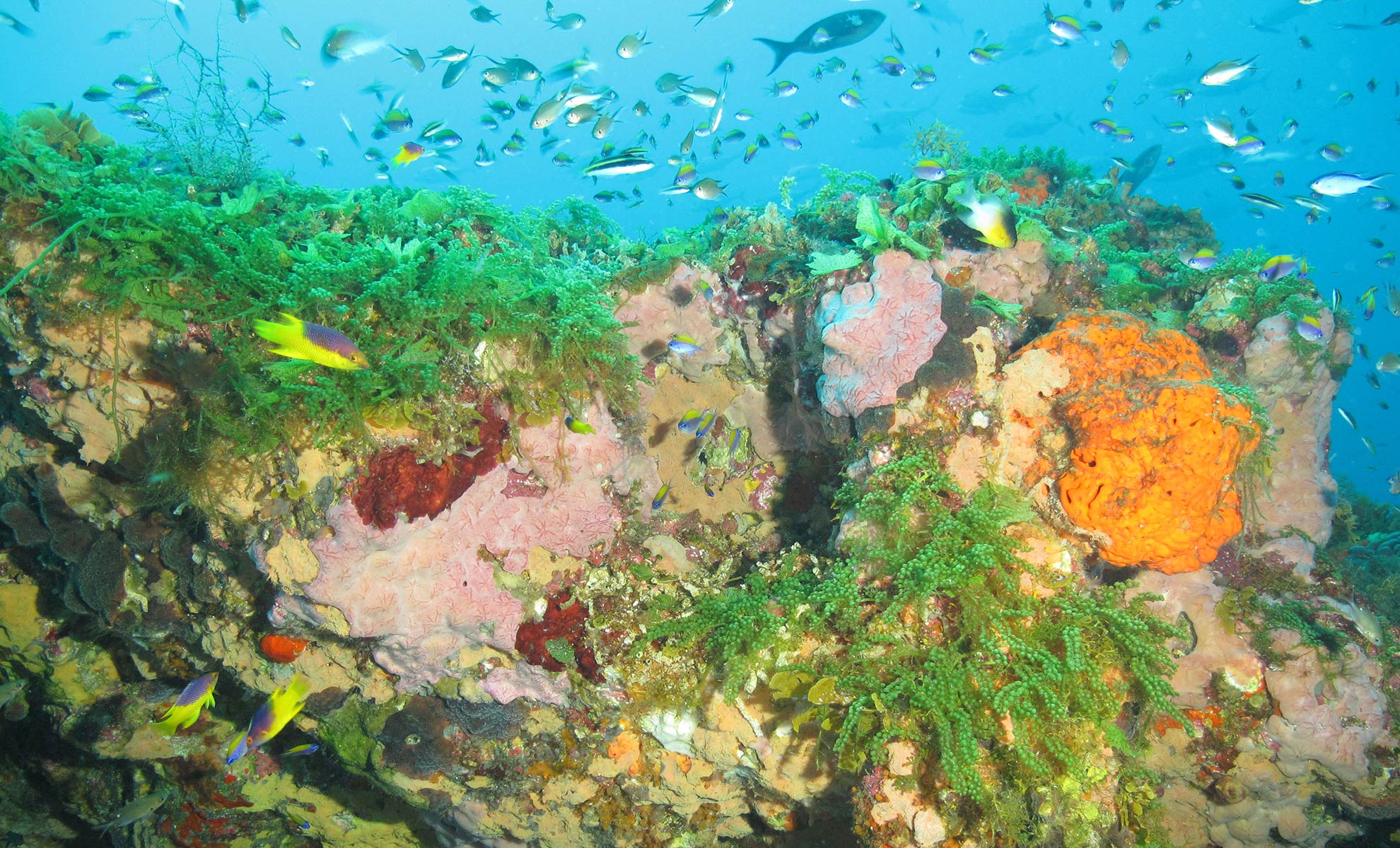


Amal Ahmed is a general assignment reporter at the Texas Observer. This story originally featured on the Texas Observer.
One hundred miles southeast of Galveston’s muddy shoreline, the Gulf of Mexico becomes a dazzling, vibrant blue. Deep below the surface, salt domes protrude from the seafloor and some of the healthiest coral reefs in the world have formed on them, making up the Flower Garden Banks National Marine Sanctuary. Some are wrinkled and folded like a brain, others cylindrical and hollow like a chimney. These lesser-known reefs, a world away from the famous Great Barrier Reef off Australia’s coast, are home to hundreds of fish species, jellyfish, and sea turtles.
Since 1992, the federally protected marine sanctuary has kept three major reefs safe from encroaching offshore oil drilling and commercial fishing. Dropping an anchor into the reef could irreparably damage the sensitive corals and destroy an important habitat for the other marine creatures. This year, the National Oceanic and Atmospheric Administration (NOAA) is poised to expand the sanctuary’s boundaries for the first time in nearly a quarter-century—if the plan can withstand lobbying from industry interests.
When the reefs were first recorded in the early 1900s by fishermen, researchers were shocked to find them so far north; the Gulf waters were thought to be too frigid to support corals, organisms mostly found in tropical waters. Hundreds of coral reefs dot the Gulf between Texas and the Florida Keys, but only a handful of sensitive banks are protected from industrial activities.
The reefs contain an abundance of species unique to the Gulf, but the region hasn’t been well-studied, says NOAA researcher GP Schmahl, who is also Flower Garden Banks’ superintendent. Expanding the protected area would allow more research into what Schmahl describes as a “very lush biological area.” Just this summer, a new species of black coral was discovered here.
Expanding the sanctuary is also key to sustaining its long-term health. Although the Gulf’s coral reefs are considered healthy, the bar for measuring reef health is pretty low. The Great Barrier, which is the world’s largest coral reef system, has been decimated by climate change and industrial activity, and the Gulf’s reefs aren’t immune to those threats—just this year, the sea surface temperatures are running 3 degrees above average.
In 2016, NOAA sought public input on a variety of plans for the sanctuary’s future, ranging from maintaining the current borders at 56 square miles to expanding it to cover 935 square miles. The public overwhelmingly supported the largest expansion plan, one that would have created a marine sanctuary from the Texas-Louisiana border to the Mississippi Delta.
But Flower Garden Banks’ $1 million budget can’t support such an expansion. NOAA settled on a more realistic build-out of 383 square miles and 15 new banks, but even that plan was scrapped after the petroleum and fishing industries argued the plan would eat into profits. The response has, predictably, perturbed environmental advocates.
Now sanctuary managers seek to increase the area to 160 square miles, effectively one-fifth of what the public wanted. Nonetheless, the current plan would triple the existing sanctuary’s size and still allow for more protection of biodiversity hot spots, according to NOAA. Though the process for expanding is “painfully slow,” Schmahl says, the opportunity to expand the sanctuary will return in a couple of years: After all, it took nearly 60 years of advocacy before the Texas researchers who first recognized Flower Garden Banks’ ecological significance saw any protections established.
In the meantime, some of the bright orange, yellow, or pink coral reefs may turn stark white when damaged. They will no longer support a thriving community of marine life. But until that happens, environmentalists and scientists aren’t giving up on protecting these unique habitats for the future.
